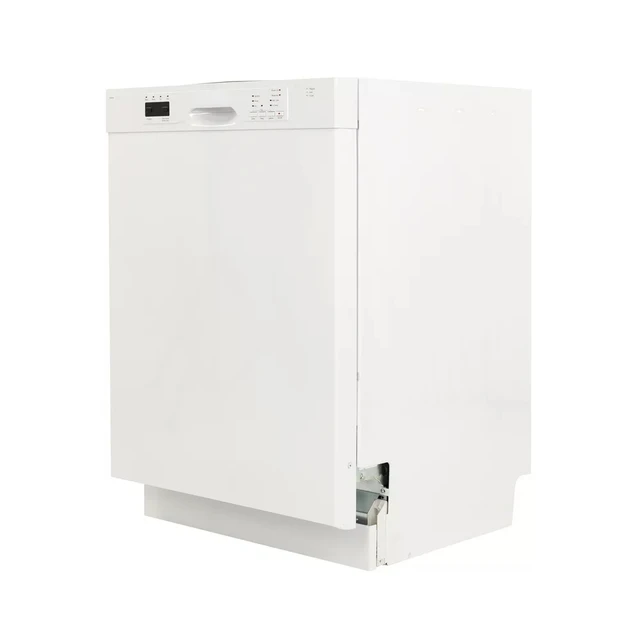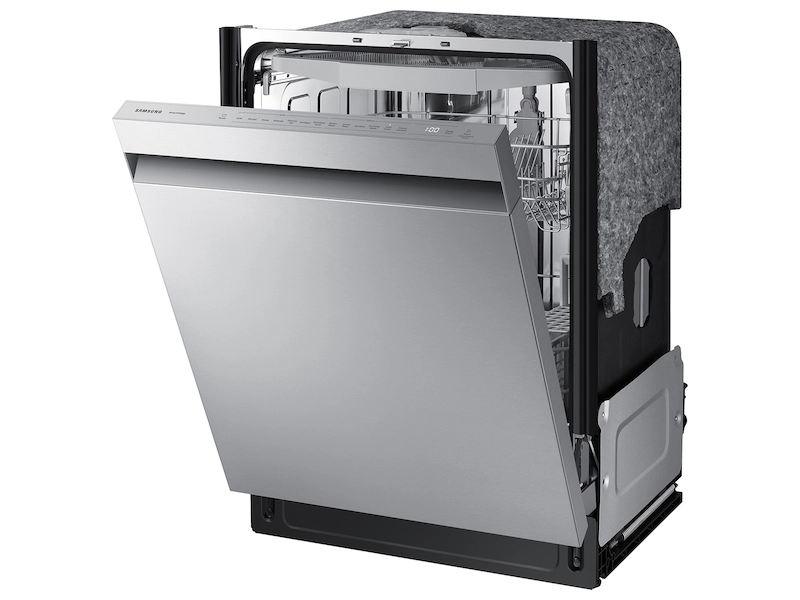Introduction
The debate over whether dishwashers are better than hand washing in restaurants is a topic that continually sparks discussion among industry professionals. Restaurant owners and managers are often tasked with determining the most efficient, cost-effective, and hygienic method for cleaning dishes. In this guide, we will delve into the dishwasher versus hand washing debate, providing specific information to help determine which option is better suited for restaurants.

Is a dishwasher better than hand washing restaurants?
Dishwashers in Restaurants
1.1. Efficiency and Time Savings
Dishwashers in restaurants are designed to efficiently clean large volumes of dishes in a shorter time compared to hand washing. These machines streamline the cleaning process, allowing staff members to focus on other critical tasks during peak hours.
1.2. Consistency and Quality Control
Dishwashers provide consistent cleaning results, ensuring that dishes, utensils, and kitchenware meet the required sanitation standards. Dishwashers utilize specific wash cycles, high water temperatures, and approved sanitizing agents to eliminate harmful bacteria and contaminants.
1.3. Workload Distribution
Using dishwashers in restaurants allows for efficient workload distribution among staff members. By delegating dishwashing duties to the machine, employees can focus on food preparation, customer service, and other essential tasks to maintain smooth operations.
Hand Washing in Restaurants
2.1. Control and Attention to Detail
Hand washing dishes in restaurants allows staff members to have complete control over each item being cleaned. The hands-on approach ensures attention to detail, enabling the identification and removal of stubborn stains, food residue, or delicate items that may require special care.
2.2. Flexibility and Adaptability
Hand washing permits flexibility, particularly in situations where immediate dishware or equipment is needed. It allows for on-the-spot cleaning, adapting to unexpected changes or requests during busy service periods.
2.3. Environmental Benefits
Hand washing, when executed correctly, can contribute to reduced water usage, especially when compared to less water-efficient dishwasher models. This approach may align with environmentally focused initiatives and demonstrate an establishment’s commitment to sustainability.

Cost Considerations
3.1. Initial Investment
The cost of dishwashers in restaurants varies based on features, capacities, and energy efficiency ratings. Initial investment includes purchase or lease costs, delivery, installation, and any necessary plumbing or electrical modifications to accommodate the machine.
3.2. Energy Consumption
Dishwashers consume electricity during operation, contributing to the overall energy bill of a restaurant. However, modern dishwashers are designed with energy-efficient features to minimize electrical consumption compared to older models.
3.3. Water Usage and Utility Costs
Dishwashers generally use more water than hand washing, especially if inefficient models or longer wash cycles are utilized. High water consumption can result in increased utility costs and may need to be offset by other considerations, such as energy-efficient appliances or adjustments in water usage elsewhere.
3.4. Staffing and Labor Costs
Hand washing dishes may require dedicated staff members who are responsible solely for dishwashing tasks. This incurs additional labor costs, such as wages, benefits, and potential staffing volume fluctuations during peak hours.
3.5. Cleaning Agents and Supply Costs
Both dishwashers and hand washing require cleaning agents or detergents. The cost of purchasing appropriate commercial-grade cleaning agents, rinsing agents, and sanitizers should be factored into the expenses associated with either method.
Hygiene and Sanitation
4.1. Dishwasher Standards and Regulations
Dishwashers in restaurants are subject to specific health and safety regulations, ensuring the proper sanitization of dishes. Compliance with industry standards helps maintain a high level of hygiene, reducing the risk of foodborne illnesses and violations during health inspections.
4.2. Hand Washing Protocols and Training
Proper hand washing techniques, including precise temperatures, soap usage, and duration, are crucial to ensure effective sanitization when washing dishes manually. Staff members should receive thorough training on these protocols to maintain the restaurant’s hygiene standards.

4.3. Monitoring and Quality Assurance
Restaurants employing dishwashers should implement monitoring systems to verify the machine’s effectiveness. Regular testing of water temperatures, detergent concentrations, and periodic inspections of dishes can help identify any issues or deficiencies in the dishwasher’s performance.
Operational Considerations
5.1. Space and Kitchen Layout
Restaurants need to consider their available space and kitchen layout when deciding between dishwashers and hand washing. Dishwashers require designated areas with necessary plumbing connections, while hand washing areas should be conveniently situated, well-designed, and equipped with proper sanitation tools.
5.2. Workforce Skills and Efficiency
The skills and proficiency of the restaurant staff play a significant role in considering the benefits of dishwashers versus hand washing. Task allocation should be based on personnel capabilities, efficiency, and the ability to maintain consistent quality during peak or demanding periods.
5.3. Volume and Turnaround Time
The volume of dishes, utensils, and equipment in a restaurant impacts the efficiency and suitability of dishwashers or hand washing. Higher volumes usually favor dishwashers due to their ability to handle larger loads and provide quicker turnaround times.

Compliance with Local Regulations
7.1. Health Department Requirements
Restaurants must comply with local health department regulations regarding dishwashing practices. Specific guidelines may outline the acceptable methods for ensuring cleanliness and sanitization, potentially favoring dishwashers due to their ability to meet these requirements consistently.
7.2. Testing and Verification
Compliance with regulations often involves regular testing and verification of dishwashing practices to ensure proper sanitization. Dishwashers may provide built-in features or systems that support these monitoring and verification processes more efficiently than hand washing.
Reliability and Consistency
8.1. Consistent Results
Dishwashers offer the advantage of providing consistent cleaning and sanitization results. Dishware processed through a dishwasher is likely to meet hygiene standards more consistently than when hand washing is relied upon, reducing the risk of contamination.
8.2. Reduction in Human Error
Human error in hand washing, such as improper water temperature, inadequate detergent usage, or insufficient rinsing, can compromise the cleanliness and hygiene of dishes. Dishwashers eliminate the human error element and provide a standardized cleaning process.
Environmental Considerations
9.1. Water Conservation
Hand washing dishes can be more water-efficient if done mindfully, using minimal water and only as needed. This approach may align with sustainability goals and environmental consciousness in reducing the consumption of natural resources.
9.2. Energy Efficiency
Energy-efficient dishwashers have made significant advancements, reducing their environmental impact through improved technology and lower energy consumption. Choosing energy-efficient models can mitigate the environmental concerns associated with dishwashers.
9.3. Balanced Approach
Restaurants can adopt a balanced approach, combining the benefits of both dishwashers and hand washing. For example, dishes and utensils that require immediate use can be hand washed while the dishwasher is operating, optimizing efficiency and resource utilization.
Space Constraints and Workflow
10.1. Kitchen Layout
The kitchen layout and available space significantly impact the decision between dishwashers and hand washing. Compact kitchens or those with limited water and electrical connections may find it more practical to rely on hand washing rather than allocating significant space for a dishwasher.
10.2. Workflow Efficiency
The workflow and operational efficiency of a restaurant should be optimized by considering factors such as table turnover, dish volume, and staff capabilities. Determining the most effective pacing and distribution of dishwashing tasks can enhance overall efficiency and customer service.

Conclusion
Determining whether dishwashers or hand washing is better for a restaurant depends on multiple factors. Dishwashers enhance efficiency, time management, workload distribution, and consistency in meeting sanitation standards. However, initial investment costs, energy consumption, water usage, staffing requirements, and dishware volume need to be considered. Hand washing enables staff to exercise control, maintain attention to detail, and support sustainability efforts. Flexibility, adaptability, and environmental benefits can be realized through manual dishwashing. Cost considerations, hygiene and sanitation standards, and operational factors must be evaluated to make an informed decision that aligns with the restaurant’s specific needs, space constraints, financial considerations, and sustainability goals. By carefully assessing these factors, restaurant owners and managers can choose the option that best suits their establishment, balancing practicality, efficiency, cost-effectiveness, and adherence to hygiene standards.

